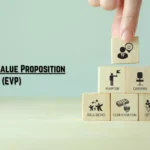The fast-evolving economy and technological trends in recent times have necessitated enhancement in competencies, knowledge, skills, and learnings in the modern workforce to deal with operational changes. However, the concept of the competency mapping process isn’t new-age terminology but has gained significant prominence in recent years due to the rapidly changing business environment. While the concept has been around for decades, the increasing complexity of jobs, the advent of digital transformation, and the need for agile workforces have made competency mapping more critical than ever.
Organizations now recognize that a well-defined competency mapping process is essential not only for identifying skill gaps but also for fostering continuous learning and adapting to innovation. As a result, it has become a cornerstone in talent management strategies, ensuring that employees remain competitive and capable in their evolving roles.
In this blog, we will give you an insight into the competency mapping meaning, types, objectives, and process of mapping that will benefit your organization. Also, its importance in surging business growth and the methods of mapping.
What is Competency Mapping?
Competency mapping is the process of identifying skills and knowledge required for employees to excel in their job roles. The process of competency mapping helps the organization align their goals with the capabilities and skills of the employees to make the workflow seamless and effective.
It serves multiple purposes like talent management, performance appraisal, work planning and development of employees.
The competency mapping in HRM is required for enhancing the efficiency of the workforce are mapped in competency mapping process and are improvised on the workforce of the organization by training and development methods to patch the skill gaps and foster learning.
A structured framework of listed competencies required in a job role not only improves productivity but also fosters the knowledge skills and adaptation capabilities in employees making them empowered and ready for uncertain business changes and economic shifts in the market.
Furthermore, it also benefits the organization in hiring the right people for the right job, helps identify the areas of grey in the workflow that need improvements, facilitates clearer performance metrics, helps in succession planning parameters framing, and ensures the goals of employees are aligned with the organizational goals for success and advancements.
Competency Mapping Example
Let us understand the competency mapping procedure by considering a few examples that will demonstrate the detailed process of competency mapping. So, the competency mapping in the HR manager job role is as follows:
Example I- Competency Mapping of Human Resource Manager
To map the competency parameters for an HR manager you need to follow the following steps:
Step 1: Identify and Define the competencies required for the HR manager role:
Based on the role of HR, the key competencies can include vital tasks such as HR knowledge skills and expertise, workforce management, current HR trends, HRMS software knowledge and how to use it efficiently, knowledge of technological advancements in HR, strategic planning and implementation, data-driven decision-making capabilities, compliance requirements, etc.
It also includes functional competencies such as recruitment and training management, the ability to design and manage performance appraisal, guiding other HR professionals to perform their work efficiently, identifying learning and development opportunities and implementing them for the required employees, administrating benefits programs, understanding of compensation structures, salary benchmarking, and reward systems, etc.
Step 2: Gap Analysis
After examining the competencies required for an HR manager role, the next step is to examine the gaps between the required competencies and the competencies present in your HR managers.
You can map the individual competencies with the mapped competencies to find the list of parameters that require improvement. Use data from performance reviews, feedback, and assessments to objectively determine gaps.
Step 3: Develop & Design Competency Development Plans
Create competency development plans based on gap analysis, targeting specific competencies for improvement. Also, design strategic training and development sessions that would help your HR managers enhance their knowledge and improve their performances as per the mapped competencies.
Include training programs, workshops, and certifications as methods to build competencies and improve the skills of HR managers to attain optimum knowledge.
Step 4: Implement Training and Development
Implement training and development programs that will benefit the HR managers, you can use virtual modes as well for the hybrid and remote employees. You can upload courses on the training management system for the distanced employees to learn.
Provide training in areas like leadership, strategic HR, labor laws, and employee relations. Encourage participation in HR conferences, webinars, workshops, and professional networking to stay updated with industry trends.
Step 5: Regular Monitoring and Feedback
Monitor the competency mapping process of HR managers to ensure it is effective and relevant to learning. Also, try offering regular support to your HR professionals (if required) to avoid over-consumption of time and wastage of resources.
Regularly seek feedback from your HR managers to know their concerns or difficulties they are facing in the process of competency mapping. It will also give you an insight into the strongest and weakest parameters of the mapped metrics, and whether it needs alterations or not.
Step 6: Evaluation and Refinement
Evaluate the competency mapping process by assessing the HR managers’ performance metrics. Gather feedback from HR Managers and other stakeholders to identify any areas of improvement in the competency mapping process. Also, make any required changes to align company goals with the competencies’ needs.
Competency mapping in HR is crucial and needs thorough review throughout to maintain equilibrium in the process and make it effective.
Types of Competency Mapping
The competency mapping types are of different varieties based on industry specific requirements and needs. Here are some of it:
➔ Functional Competency mapping
Functional competencies mapping is focused on improving the functional skills and knowledge of employees from role specific perspective such as finance, marketing, operations, human resources, and more.
It ensure that the competencies required for particular job role of employees is aligned with the overall goals of the organization.
It also aids in identifying potential leaders and key talent within a department by mapping the competencies necessary for advancement and helps in succession planning of the organization.
➔ Behavioral Competency Mapping
The behavioral competency mapping focuses on behavior and attributes of employees. It maps the competencies required for employees in terms of their professional behavior for effective job performance.
It ensures that employees performs ethically in their highest of standards and professionalism which will align with the company’s goal accomplishments, successful business ties, and maintaining good relationship with stakeholders, consumers and so.
➔ Role-based Competency Mapping
Role based competency mapping tailors competencies to specific job roles, ensuring that each position has clearly defined skills and requirements.
It ensures that the mapped competencies are aligned with the operations of individuals as per their job roles or responsibilities in the organization.
It affirms that no employees get confused with their job roles or responsibilities as well as provides them with adequate guidelines that help them accomplish their tasks without complexities.
➔ Core Competency Mapping
It outlines the overall core competencies that are required by the employees to achieve the goal of the organization. It includes key skills such as communication, teamwork, problem-solving, adaptability, and leadership, as well as the organization’s values and mission that guide employee behavior and decision-making.
These competencies ensure that all employees are aligned in their efforts to contribute to the organization’s success, growth, and advancements.
➔ Technical Competency Mapping
It maps the technical competencies skills of employees such as software skills, engineering proficiency of employees, adapting to technical advancements, etc.
It ensures that employees’ technical competency is well aligned with the goals of the organization to achieve success as well as prepare employees to adapt to technical changes.
➔ Threshold Competency Mapping
Threshold competency mapping is the minimum competency required for a job role in a company. This is done to enhance the minimum skills and knowledge in employees required to sustain the organizational culture.
Also, it ensures that employees must possess a few minimum competencies to meet the company’s expectations. It sets the foundation for what is minimally required in terms of skills, knowledge, and abilities to perform a role. It is specifically used by HR to set minimum criteria for shortlisting new hires for the company.
➔ Team Competency Mapping
Team competency mapping focuses on identifying the collective competency in the group or team. It helps in team formation, conflict resolution, team development, etc.
It is the collective competency matrix required for a team to perform efficiently without perplexities. the competency matrix set in a tea mapping can be used to evaluate the team’s performance management and helps to ensure that the team as a whole can perform its tasks efficiently by complementing each other’s strengths and weaknesses.
Objectives of Competency Mapping
The objective of competency mapping is to outline the skills knowledge and capabilities of employees to perform efficiently and also to effectively enhance the performance management process by following the competency framework.
Here are some other objectives of competency mapping:
1. Align Company Goals with Individual Goals
The first and foremost objective of competency mapping is to ensure that an employee possesses the knowledge and skills that are necessary to achieve the long-term as well as short-term goals of the organization.
Also, it ensures that the skills and capabilities of employees are aligned with the overall goals of the organization by providing a competency framework that highlights the competencies required for each employee to improve a specific set of skills or knowledge that is essential for the job within an organization.
2. Improve Workforce Management
The workforce performance management is improved by the competency framework as it provides the required skills and capabilities required for employees to perform efficiently.
From the competency matrix provided in the copetecy mapping, the HR managers can evalute the performances in accordance and also creates clear expectations and accountability by defining specific competencies for each role that helps diminshing the performance gaps or consfusions..
3. Facilitate Employee Advancements
The process of competency mapping provides a framework that helps in scheduling the learning and development sessions for employees to align it with organizational goals.
It instills a culture of continuous learning, improvement, and high performance by focusing on key competencies that drive success.
4. Succession Planning
The process of competency mapping ensures that the skills and knowledge of employees are continuously improved to match the changes and adapt to uncertain alternatives with quick responses.
This as a result highlights the proficient employees during the learning and development phase that the company can strategize for their succession planning.
Also, it enables organizations to move employees into new roles based on their skill sets, promoting internal career growth and effective talent utilization.
5. Support Change Management
By mapping competencies, organizations can build a versatile talent pool capable of taking on new challenges and evolving with market conditions.
The competency mapping ensures continuous learning of the employees to match the standards of competency matrix which as a result elevates their skills and capabilities leading to making them efficient and adaptable to busniess changes.
Competency Mapping Process
The methods of competency mapping are sequential and include all the important steps that outline the essential skills and knowledge of employees. Let us learn in detail about the steps in competency mapping:
Step 1: Identify the Job Roles & Competencies to Map
The first step in the competency mapping process is to identify the job roles, departments within the organization, and the teams that require mapping of competencies.
In this process you can define the scope, that is if they need to prepare competency mapping for a particular department, a specific team, a job role, or the entire organization.
Step 2: Collecting and Gathering Information
After identifying the job roles and department to map the competencies, the next step is to collect and gather information by conducting a thorough job analysis to understand the tasks, responsibilities, and expectations of the role. You can adopt various methods to gather information such as job analysis methods, interviews with role incumbents and managers, etc.
Step 3: Preparing Competency Framework
Prepare a competency framework mentioning the skills, knowledge, and capabilities that are required according to the job analysis. Also, select a competency framework that will be used as the basis for mapping. You can develop your own or use existing models (e.g., SHRM for HR roles, and technical frameworks for IT roles).
Step 4: Define Job Descriptions and Specific Competencies
Define the job descriptions and specific competencies clearly in the framework made for the competency mapping process. Include all the skills and knowledge that align with the overall growth of the organization as well.
Step 5: Access Competency Levels
Define the competency levels for each job roles. It is the scale measures the competency level such as beginner, intermediate, expert, and advanced.
For example, for HR manager job role, you can define the minimum comptency level should be of expert level, for a software developer (junior) the level should be of intermidiate, etc.
Step 6: Map Competencies to Job Roles
Create a competency matrix listing the roles, skills, knowledge and proficiency levels required for a job roles. Make a listicle of all the above mentioned parameters to a single document.
Step 7: Seek Input from Stakeholders
Seek input from stakeholders such as managers, HR heads, subject matter experts SMEs, and employees to validate the identified competencies.
Step 8: Review the Process
Review the entire process of the competency mapping with stakeholders and make necessary adjustments unanimously. Also, ensure its alignment with organizational strategies.
Step 9: Implement & Assess The Process
Implement the process by integrating it with organizational processes such as recruitment, perfomance management, training and development etc.
Also, identify competency gaps between the employee’s current skills and the required competencies through various methodologies such as self-assessments, 360-degree feedback, manager reviews, direct observation, etc.
Step 10: Monitor, Update & Review
Regularly monitor the effectiveness of competency mapping based on the levels set in the process for each job role. Also, conduct periodic reviews to check the relevancy of the competency process in current times, current job requirements, and market trends, else prepare alterations as per requirements.
Importance of Competency Mapping
The importance of competency mapping is significant and holds great importance for the organization and its workforce. Here are some:
- Improves Productivity among employees
- Surges collaboration
- Enhance team dynamics
- Improve the recruitment, selection, and hiring process
- Strengthen relationship among team members
- Increases employees’ performances
- Identifies skills gaps and training needs
- Eliminates wastage of resources
- Aligns individual capabilities with organizational goals
- Authenticate the performance appraisal and performance management process
- Facilitates succession planning
- Supports organizational agility
- Enhance accountability in employees
- Strengthen Leadership
- Improves employee empowerment
- Diminishes discrimination, biases, and favoritism
- Elevates organizational efficiency and more.
End Note
Competency Mapping in HRM is essential for creating a high-performing, adaptable workforce that aligns with organizational goals. It not only improves recruitment and performance management but also drives employee development, engagement, and retention. By focusing on competencies, organizations can build a culture of continuous improvement and agility, ensuring long-term success in a competitive environment.









